20th-century Art Movements: Art Flows Create History
The 20th century was a crucible of artistic experimentation and upheaval. As society grappled with industrialization, war, and rapid social change, artists responded with a radical reimagining of visual expression. From the bold strokes of Fauvism to the conceptual depths of Minimalism, the century witnessed a breathtaking array of art movements that challenged conventions, explored the human psyche, and redefined the boundaries of art itself.
These movements were not isolated incidents but interconnected threads in a rich tapestry of creativity. They reflected the spirit of their times, inspiring subsequent generations of artists and leaving an enduring legacy on the cultural landscape.
Here’s an overview of some of the most significant 20th-century art movements:
Movement 1 - Fauvism (1905-1910)
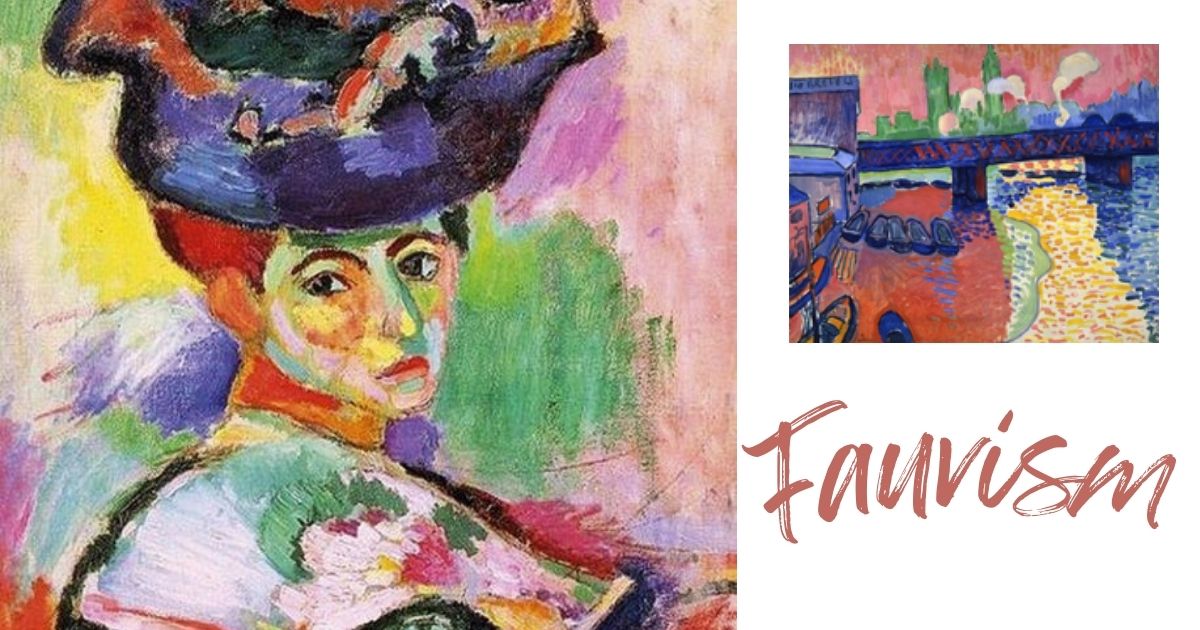
Woman with a Hat by Henri Matisse and Charing Cross Bridge by André Derain (French, 1880-1954)
Fauvism was one of the first avant-garde movements of the 20th century, emerging in France around 1905. Led by artists like Henri Matisse and André Derain, Fauvism emphasized vibrant color, bold brushwork, and simplified forms.
The movement sought to convey emotional intensity and artistic freedom, moving away from realistic representations. The truth is Fauves rejected the muted palette of Impressionism in favor of vibrant, arbitrary colors applied directly from the tube. Paintings featured loose, expressive brushstrokes that conveyed a sense of spontaneity. Furthermore, it is abstract and simple by often reducing subjects to basic shapes with patterns. The primary aim was to evoke emotional responses through the use of color and form.
The prominent artists of this period breathed life into each of their works. Henri Matisse is known for works like "Woman with a Hat" (1905) and "The Joy of Life" (1905-1906), which exemplify the Fauvist style. André Derain created vibrant landscapes such as "Charing Cross Bridge, London" (1906), showcasing his use of bold and expressive colors. Maurice de Vlaminck is notable for "The River Seine at Chatou" (1906), where his dynamic compositions reflect the energetic brushwork characteristic of Fauvism.
Despite Fauvism being a relatively short-lived movement, its impact on art history is undeniable. Fauvism laid the groundwork for later movements like Expressionism and Abstract Expressionism by liberating color from its descriptive role, paving the way for greater experimentation in modern art. The term "Fauves" (French for "wild beasts") was coined by critics in response to the artists' bold and shocking use of color.
Movement 2 - Expressionism (1905-1933)
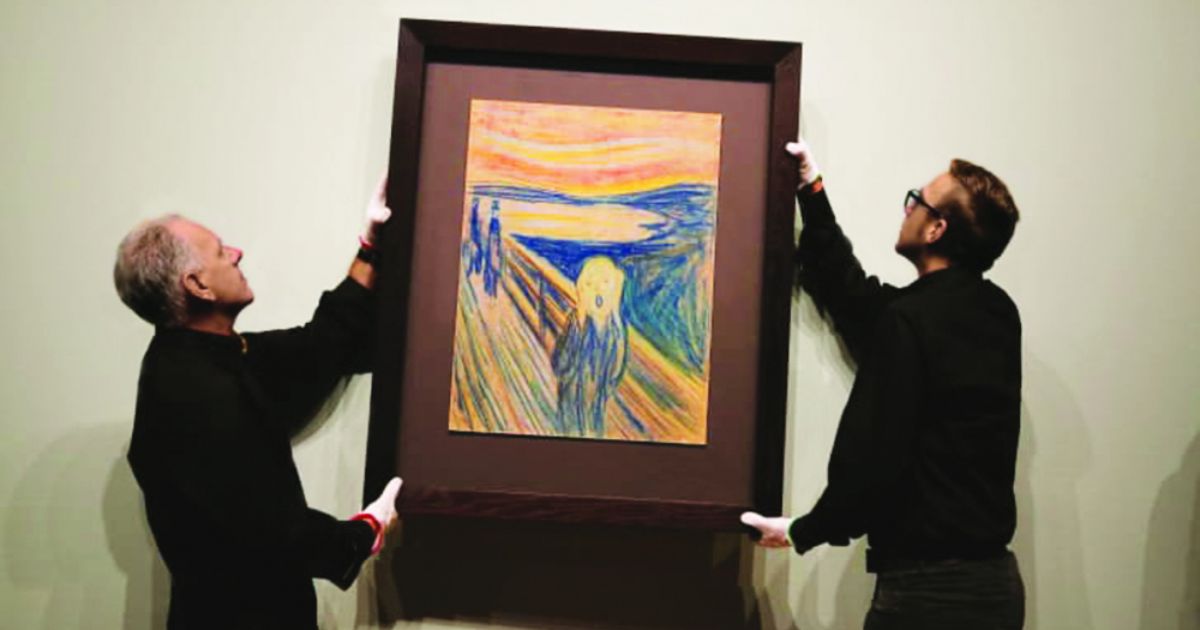
The Scream by Edvard Munch
Expressionism emerged in Germany and Austria in the early 20th century as a reaction against the perceived superficiality of Impressionism. This movement aimed to depict the artist's subjective emotions and experiences rather than objective reality. Expressionism gained prominence with the works of Edvard Munch and Die Brücke, a group of German artists.
A key characteristic of Expressionism is emotional intensity, conveying emotional experiences often using distorted forms with exaggerated colors. Symbolism and abstraction were commonly incorporated to express inner turmoil. Besides, dramatic themes often included existential angst, social critique, or the human psyche. Expressionist artworks utilized bold lines combined with vivid colors to enhance their emotional impact.
Expressionism had a significant impact on various fields, may be mentioned as theater, literature, and film. Unlike Impressionism, which captured the fleeting effects of light, Expressionism sought to convey the artist's inner emotional and psychological experience.
The distorted reality was often used, with forms and colors exaggerated to enhance emotional impact and create a sense of unease or anxiety. The emphasis was on the artist's personal perspective and interpretation of the world. Many Expressionist works also addressed social and political issues, reflecting the turbulent times in which they were created.
Notable artists of the Expressionist movement can be mentioned as Edvard Munch, whose iconic painting "The Scream" is perhaps the most recognizable image of Expressionism. Ernst Ludwig Kirchner, a leading member of the German Expressionist group Die Brücke, is known for his urban landscapes and portraits. Wassily Kandinsky, while often associated with Abstract Expressionism, exhibited Expressionist tendencies in his early work. Egon Schiele, an Austrian Expressionist, was known for his intense and psychologically charged portraits.
The legacy of Expressionism is profound, influencing subsequent art movements such as Abstract Expressionism, Surrealism, and Pop Art. Its emphasis on the artist's subjective experience continues to resonate with audiences today.
Movement 3 - Cubism (1907-1920s)
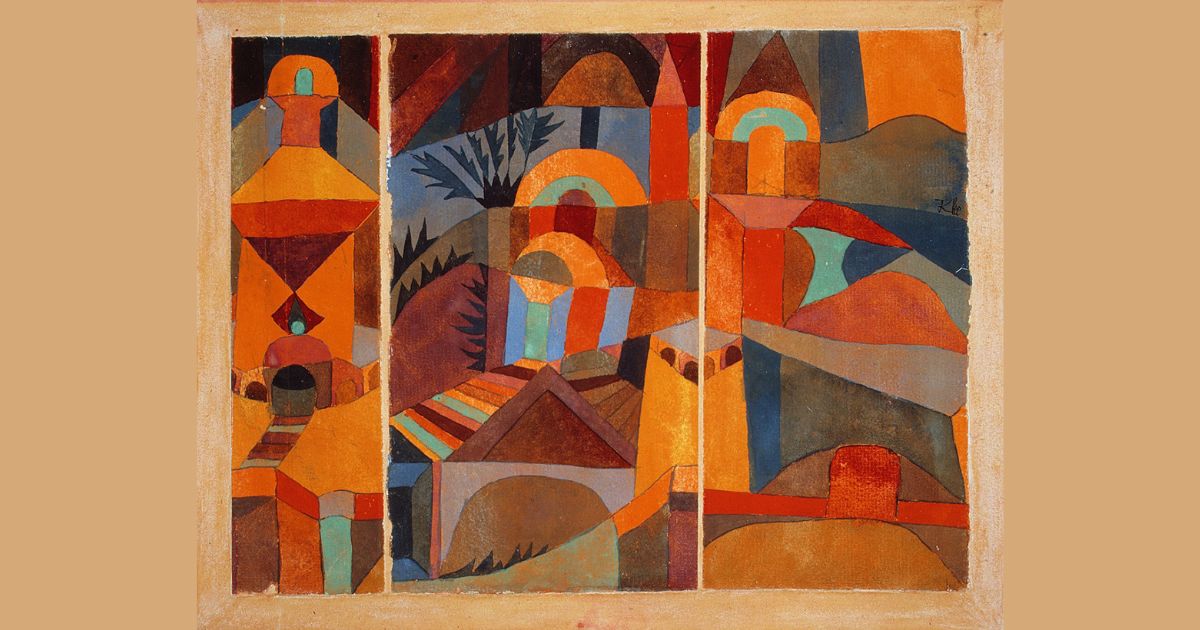
Temple Gardens by Paul Klee
Cubism, pioneered by Pablo Picasso and Georges Braque, revolutionized the way we perceive and represent the world. Emerging in Paris in the early 20th century, Cubism deconstructed objects into geometric shapes and multiple perspectives. It brought groundbreaking differences from the traditional notion of linear perspective. This movement transformed subjects into geometric forms like cubes, spheres, and cones.
The special thing is the drawings depicting them from multiple viewpoints simultaneously. Cubist artists fragmented and reassembled their subjects, creating abstract compositions.
There are two primary phases of Cubism: Analytical Cubism and Synthetic Cubism. Analytical Cubism breaks down forms into their parts, often using a limited color palette. In contrast, Synthetic Cubism reassembled fragments using collage and other techniques, incorporating brighter colors and more varied materials.
Pablo Picasso is one of the most significant figures in Cubism, with key works including "Les Demoiselles d'Avignon" (1907) and "Guernica" (1937). Georges Braque, a close collaborator with Picasso, is known for his work "Violin and Candlestick" (1910). Juan Gris, another notable Cubist artist, emphasized color and collage techniques in works like "The Sunblind" (1914). Another prominent name is Fernand Léger, known for "The City" (1919), he especially mechanical forms and their representation.
Movement 4 - Futurism (1909-1944)
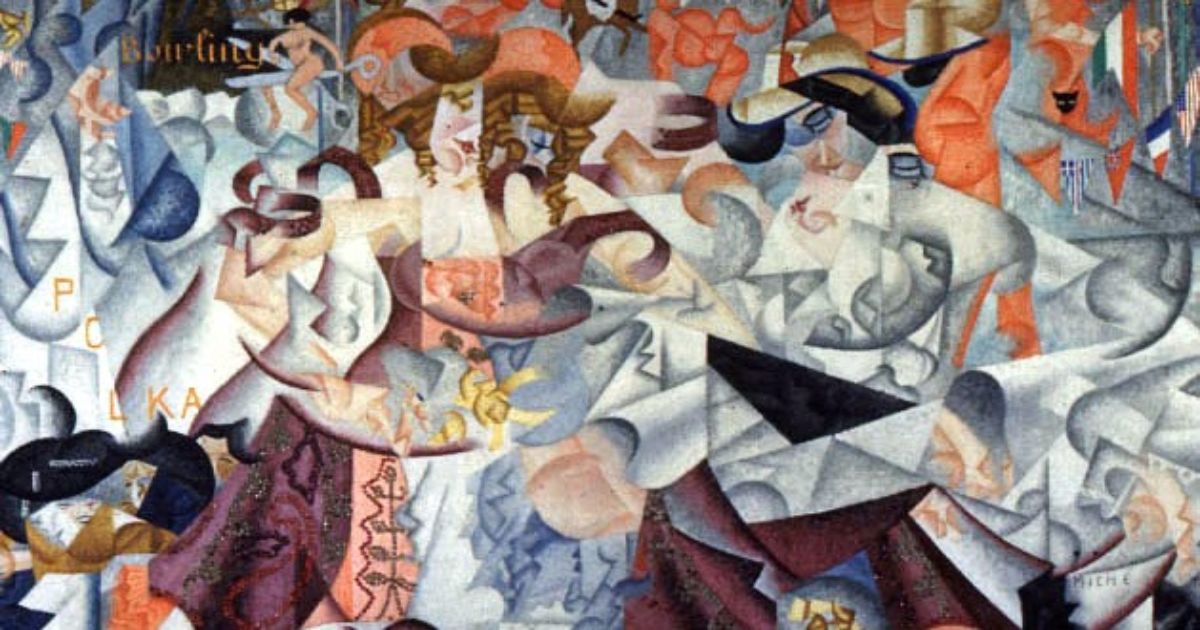
Dynamic Hieroglyphic of the Bal Tabarin by Gino Severini
Futurism is a movement as a celebration of modernity, technology, and speed. Futurism rejected the past to capture the essence of the rapidly changing world. This movement described motion and speed through lines, shapes, and repetition. It emphasized modern themes such as technology, industry, urban life, and the mechanization of society, using vibrant colors combined with sharp lines to convey energy and vitality. Similar to Cubism, Futurism utilized fragmentation and abstraction to depict movement.
Notable Futurist artists include Umberto Boccioni, known for "Unique Forms of Continuity in Space" (1913) and "The City Rises" (1910). Giacomo Balla's work, such as "Dynamism of a Dog on a Leash" (1912), exposes motion in everyday scenes. Carlo Carrà is famous for "The Funeral of the Anarchist Galli" (1911), emphasizing dynamic composition. Besides, Gino Severini highlighted war and technology in works like "Armored Train in Action" (1915).
While Futurism was a relatively short-lived movement, its influence can be seen in subsequent art and design movements. Its impact continues to resonate in contemporary culture, shaping how modern society perceives as well as interacts with art.
Movement 5 - Dada (1916-1924)
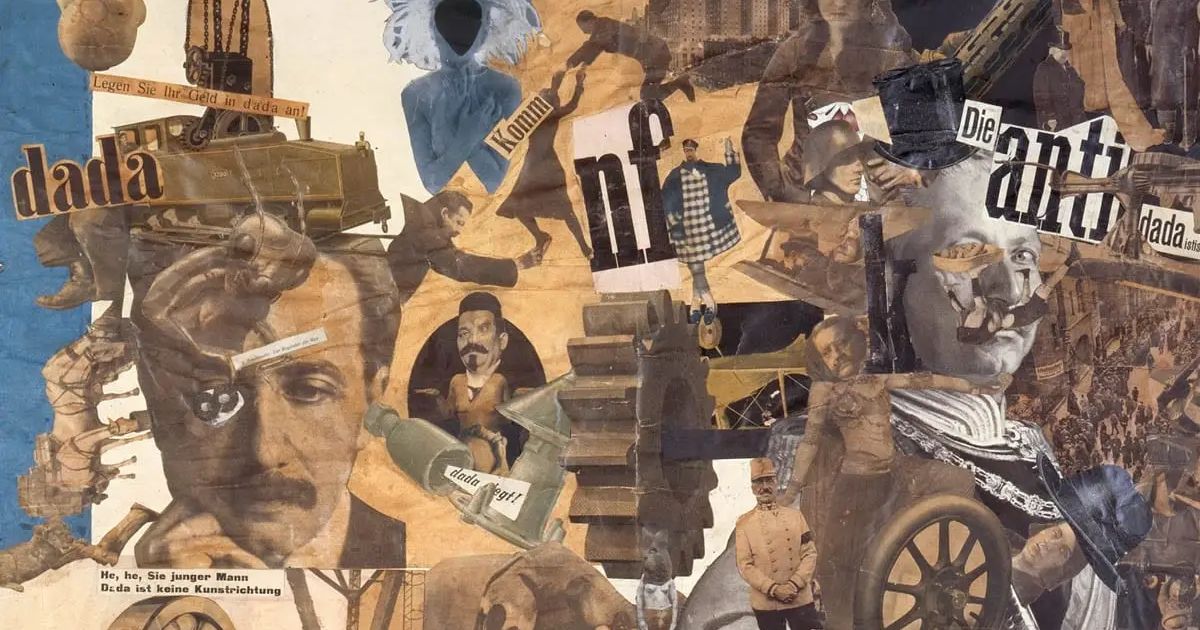
Cut with the Kitchen Knife through the Last Epoch of Weimar Beer-Belly Culture in Germany by Hannah Höch
Dada is considered a reaction to the horrors of World War I. Originating in Zurich, Switzerland, Dada challenged conventional notions of art, embracing absurdity, chance, and even irrational. The word “Dada” itself was said to have no specific meaning, and this senselessness became a core part of the movement.
The movement embraced meaninglessness, with works often having no clear meaning and being shocking or humorous. Many Dada artists denounced war and social injustice, holding anti-war or anti-capitalist views. Techniques such as collage and ready-made (using everyday objects as artwork) were popular in the Dada movement.
Dadaists questioned the definition and purpose of art. They incorporated everyday objects into artworks, exemplified by Marcel Duchamp's "Fountain" (1917), used collage techniques and assemblages to create unexpected juxtapositions, as well as explored randomness in the creation process.
Each Dada artist had a different approach, and their works were often highly personal. We can mention some prominent names like Marcel Duchamp, his shock work is "Fountain" (a urinal placed in a gallery). Hans Arp, a German Dada artist, was known for his abstract sculptures and collages. Tristan Tzara, a Romanian Dada poet and theorist, was one of the founders of the movement.
Movement 6 - Surrealism (1924-1966)
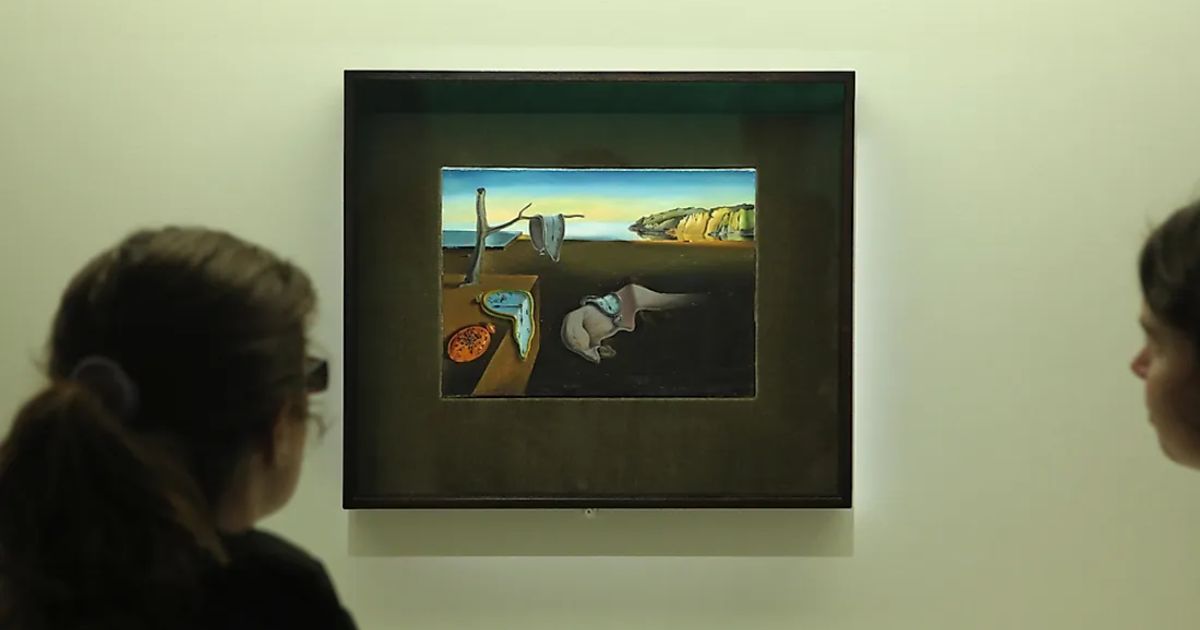
The Persistence of Memory by Salvador Dalí
Influenced by Freudian psychology, Surrealism unlocked the creative potential of the subconscious, blending reality with fantasy to create dreamlike and often bizarre compositions.
These works use fantastical, illogical imagery to evoke the subconscious, combining unrelated elements to create startling compositions. Automatic drawing and writing were employed to tap into the unconscious mind. Meanwhile, metaphor symbols were incorporated to convey deeper meanings.
Artists have contributed tirelessly to making Surrealism a lasting and significant movement in art history. Salvador Dalí is the author of iconic works like "The Persistence of Memory" (1931) and "The Elephants" (1948). René Magritte is notable for "The Treachery of Images" (1929) and "The Son of Man" (1964). Joan Miró created works like "Harlequin’s Carnival" (1924-1925), emphasizing symbolism.
Movement 7 - Abstract Expressionism (1940s-1960s)
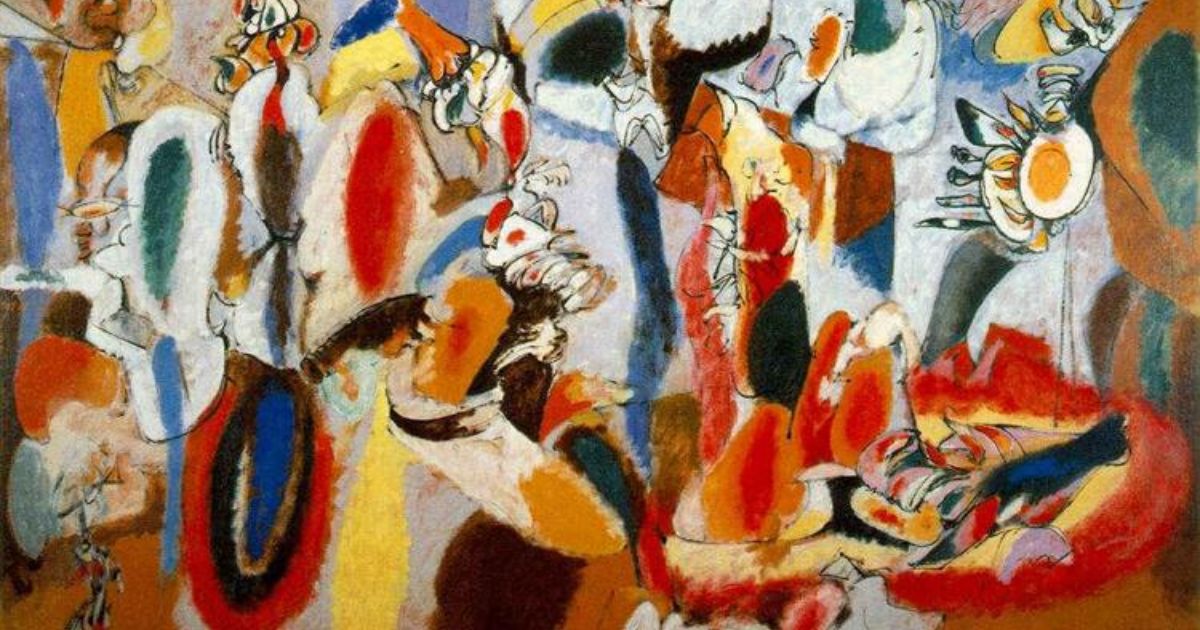
The Liver is the Cock's Comb by Arshile Gorky
Like its unique name, many Abstract Expressionist paintings are monumental in size, influentially immersing viewers in the artwork.
There are two main styles within Abstract Expressionism: Action Painting and Color Field Painting. Action Painting is characterized by energetic and dynamic brushstrokes, where the artist throws or drips paint onto the canvas. Color Field Painting opens to the viewer large areas of color to evoke emotional responses.
The artists names we need to mention are Jackson Pollock - the author of drip paintings: No. 5 (1948) and Autumn Rhythm (1950). Mark Rothko is the creator of color field paintings like No. 61 (Rust and Blue) (1953). Another author with a strong personal color is Willem de Kooning, he painted Woman I (1950-1952), blending abstraction with figurative elements.
Abstract Expressionism has a strong impact on positioning New York as the new center of the art world, shifting the focus from Europe. Until later, it influenced subsequent movements such as Minimalism and Postmodernism.
Movement 8 - Pop Art (1950s-1970s)
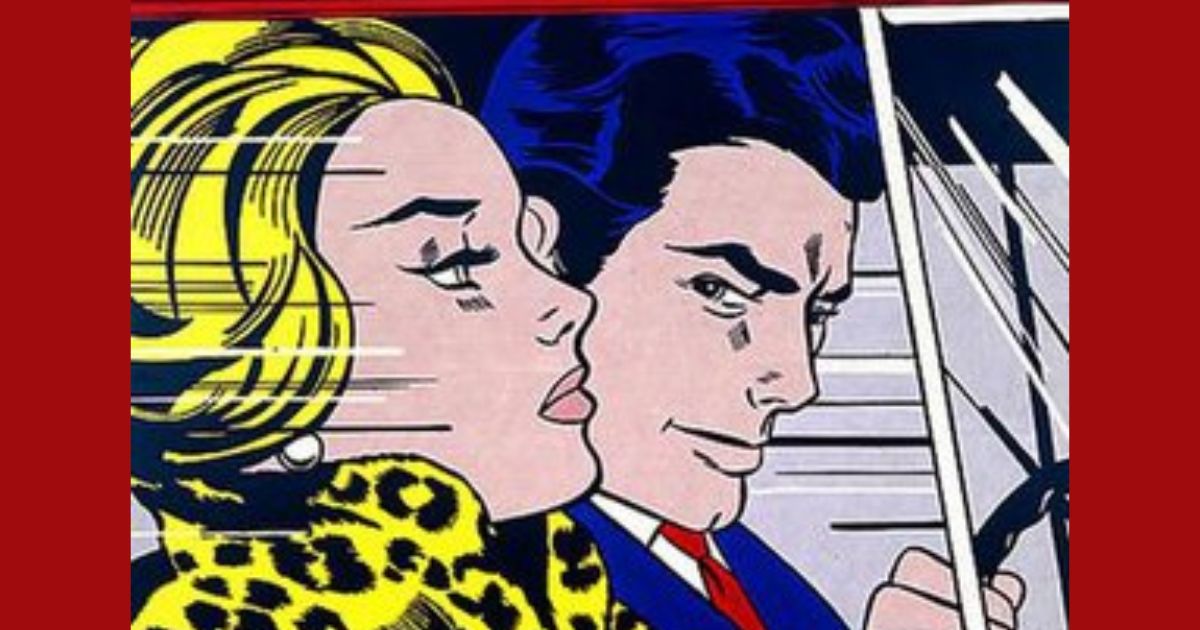
In the Car by Roy Lichtenstein
There is a movement that has many novel characteristics that are unlike any other art movement, which is Pop Art. Pop Art is inspired by popular culture, consumerism, and mass media. This movement celebrated everyday objects, advertisements, and celebrity culture, effectively blurring the line between high art and popular culture.
Pop Art has bold colors and imagery, utilizing bright colors and recognizable images from advertisements, comics, even consumer goods. The movement employs ingredients from irony and critique. Popular topics are consumer culture and mass production. Pop art is different from other movements because it repete and appropriate familiar images.
Andy Warhol is one of the most iconic figures in Pop Art, so you can step into the world of pop art through his works like Campbell’s Soup Cans (1962) and Marilyn Diptych (1962). Roy Lichtenstein was inspired by comics, his art Whaam! (1963) and Drowning Girl (1963) are representative works. Besides, Richard Hamilton created notable pieces such as Just What Is It That Makes Today's Homes So Different, So Appealing? (1956).
Movement 9 - Minimalism (1960s-1970s)
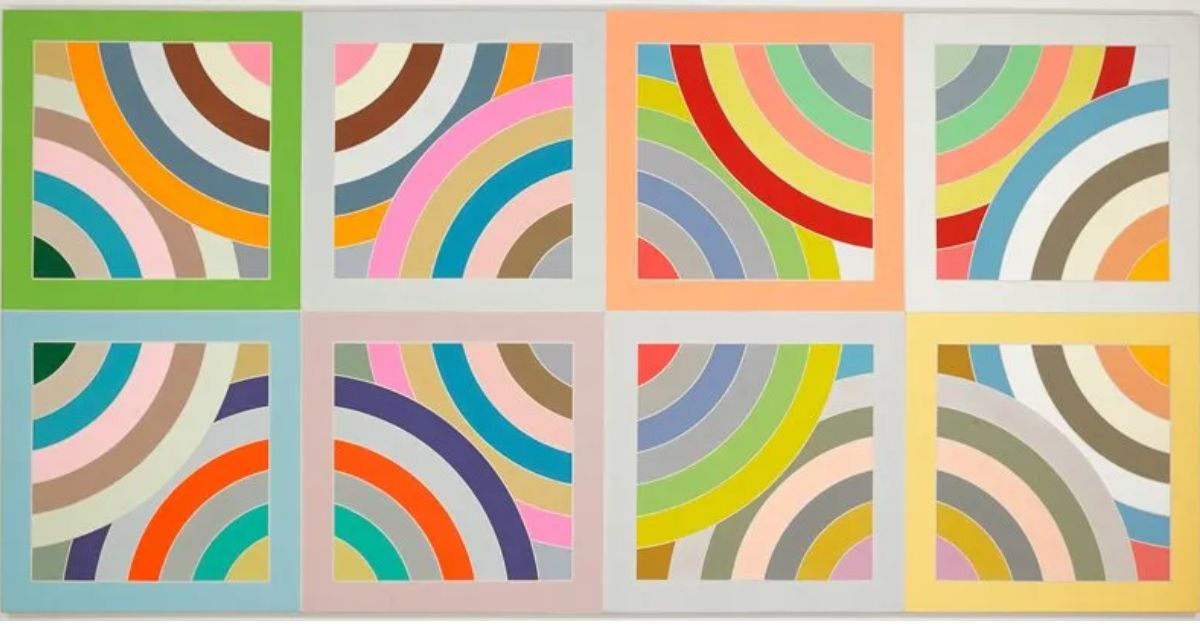
Tahkt-I-Sulayman Variation II by Frank Stella
Minimalism emphasized the use of simple geometric shapes, monochromatic color palettes, and a reduction of elements. It creates artworks stripped of personal expression or narrative. Moreover, repetition and seriality are also common, creating a sense of rhythm in the artworks.
Works must be mentioned including Donald Jud'z's industrial-like constructions are made of simple geometric forms. Carl Andre created sculptures using basic materials like bricks, steel, and wood, arranged in repetitive patterns. Creativity doesn't stop there. Dan Flavin used fluorescent lights to make installations that transformed architectural spaces.
Minimalism influenced architecture, design, and various art forms, promoting the idea of "less is more." It paved the way for movements like Conceptual Art and continues to affect contemporary artists seeking simplicity and clarity in their work.
Movement 10 - Conceptual Art (1960s-1970s)
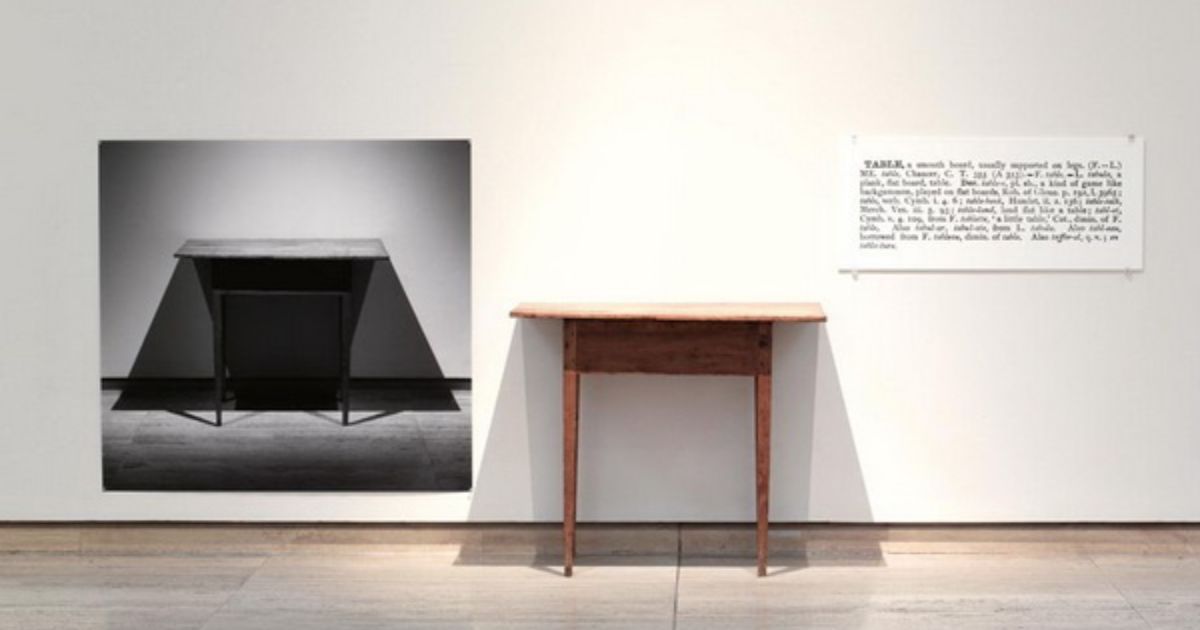
One and Three Tables by Joseph Kosuth
Look at the Conceptual Artworks, you could wonder meaning behind them. For this art movement, the concept behind the artwork is more important than its physical form. Additionally, many artworks in this genre exist primarily as documentation, such as photographs, texts, or performance records.
The outstanding feature of conceptual art is the critique of art institutions. They have paved a different path for themselves in the art world.
Prominent artists associated with Conceptual Art include Sol LeWitt, his wall drawings and writings, such as "Wall Drawing #1" (1968). Joseph Kosuth is famous for "One and Three Chairs" (1965), a piece exploring language and perception. Yoko Ono is recognized for her conceptual works like "Grapefruit" (1964) and "Cut Piece" (1964). Marcel Duchamp, often seen as a precursor to the movement, contributed significantly with his readymades, which questioned the nature of art itself.
Movement 11 - Street Art (1980s-Present)
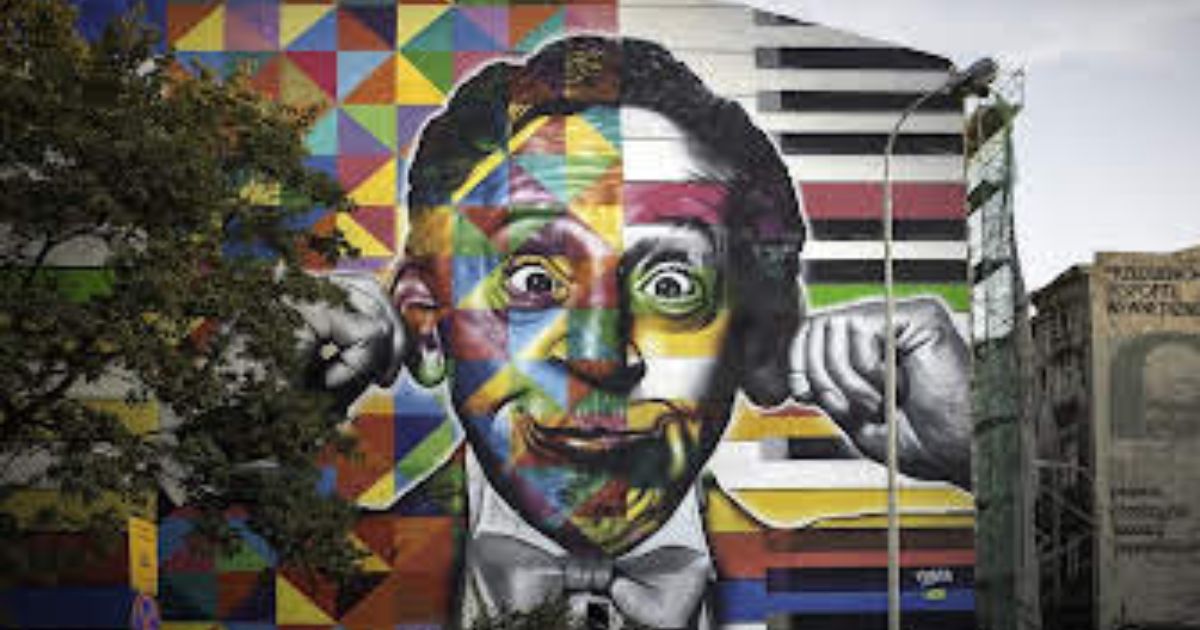
Eduardo Kobra final 2 by Eduardo Kobra
Street Art wrote its own story by expressing its close relationship with society. This is an art movement that is spontaneous and interactive.
Street Art has many different types, encompassing graffiti, murals, and public installations. You can see Street Artwork in everyday life. This stems from the fact that artists use urban environments as their canvas to convey social, political, and cultural messages.
Prominent street artists include Banksy, known for his politically charged works like "Girl with a Balloon" (2002) and "Flower Thrower" (2003). Shepard Fairey gained fame for "Obey Giant" (1989) and the "Hope" (2008) poster, which promoted political activism. Keith Haring created iconic street murals such as "Crack is Wack" (1986) and "Tuttomondo" (1989). Other notable artists include Invader, who creates pixelated mosaic tiles inspired by video game culture.
As a dynamic and evolving movement, Street Art continues to inspire artists and audiences alike, encouraging creative expression and public engagement. While it is often celebrated for its vibrancy and ability to communicate powerful messages, the legality and impact of Street Art on urban environments remain subjects of ongoing debate. But overall, the ephemeral nature of Street Art, often subject to weather, vandalism, or removal, adds to its unique appeal and challenges the permanence typically associated with traditional art forms.
Enhance your expertise with Skilltrans through their curated selection of related courses. Please click on the course name below to learn more:
Cartoon Drawing For Absolute Beginners
You will learn how to draw cute cartoon characters. Also, you will learn how to draw simple cartoon backgrounds. We’ll start with the basics. For example whats the anatomy of our cute cartoon characters and what shapes we’ll use to draw them. Then we’ll jump into different facial expressions so that you can express emotion with your characters. Also different hairstyles, a lot of practice sheets, and many more.
Drawing and Colouring: Birds and Flowers (Art as Meditation)
Nature influences art in many we can't imagine art without nature. As it is the source of inspiration for every artist, its the best way to start learning art through nature. Its a kind of meditation in which we relate ourselves with the beauty of nature. When you indulge yourself in activities related to nature you feel calm and relaxed.
In this course you will learn to make beautiful leaves, flowers and exotic and beautiful birds which will not only enhance your painting.
Character Art School: Complete Coloring and Painting
Character Art School is a 6 week learn-anywhere video course where you learn to become adept at coloring and painting professional characters. I’ve hand-crafted the Character Art School: Complete Coloring and Painting course to be the only course you need, to learn all the core fundamentals and advanced techniques to coloring and painting characters well. If you’re an absolute beginner or you’re already at an intermediate level, the course will advance your current ability to a professional level. The course is a comprehensive 5 module guided video course, where the only limit to your progression is your determination and engagement in the rewarding assignments.
Conclusion
The 20th century witnessed an explosion of artistic innovation and diversity, with each movement contributing to the evolving narrative of modern art. Each movement left an indelible mark on the art world, shaping the course of contemporary creativity. As we move further into the 21st century, the legacy of these movements continues to inspire and challenge artists, reminding us of the ever-evolving nature of art and its power to reflect, critique, and transform society.
Art always brings us many emotions as well as reflections on life. In general, art is an indispensable part of human history. To understand and nurture your love of art, you can register for Skilltrans courses today. We have useful courses at the most preferential prices waiting for you to discover.

Meet Hoang Duyen, an experienced SEO Specialist with a proven track record in driving organic growth and boosting online visibility. She has honed her skills in keyword research, on-page optimization, and technical SEO. Her expertise lies in crafting data-driven strategies that not only improve search engine rankings but also deliver tangible results for businesses.



